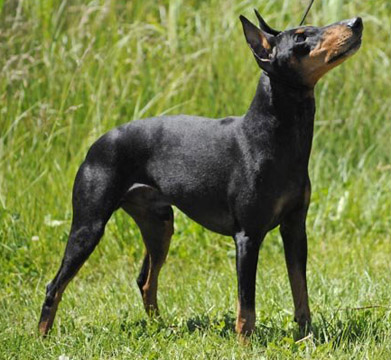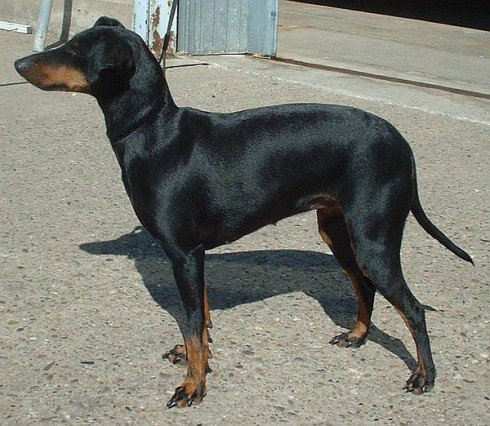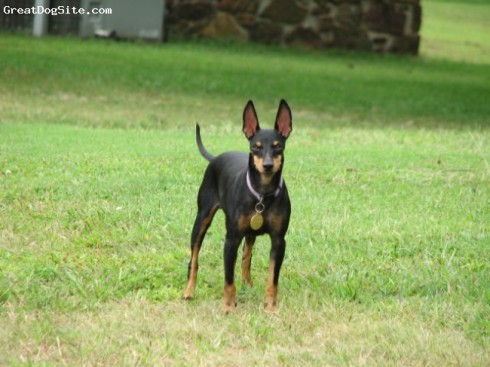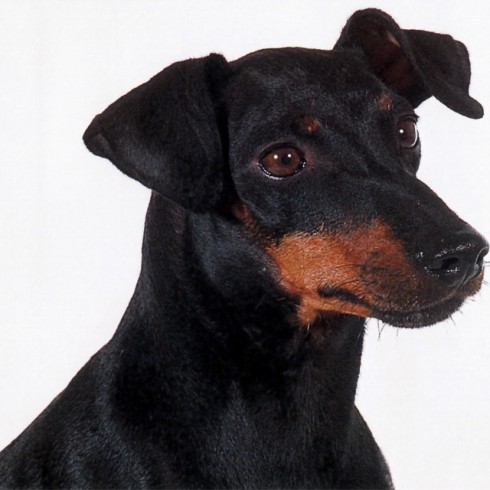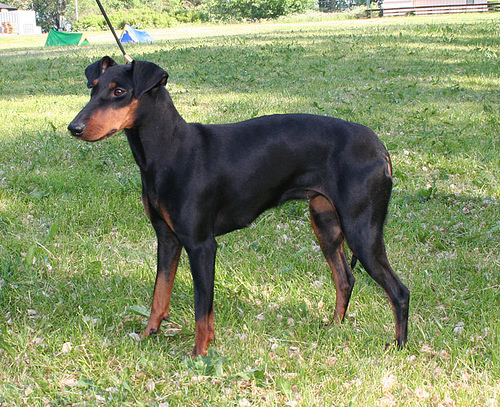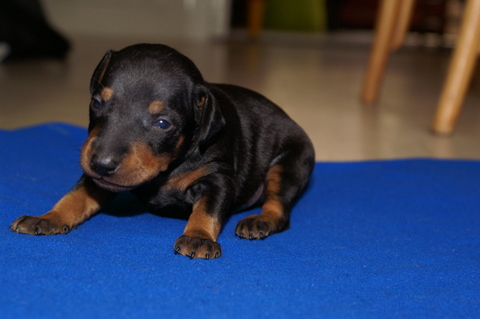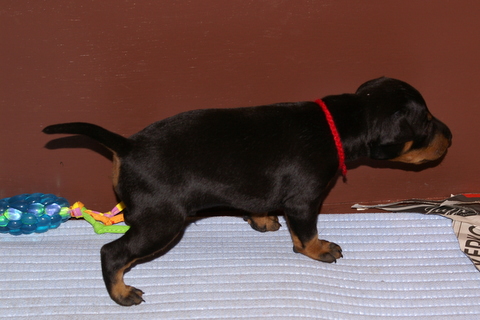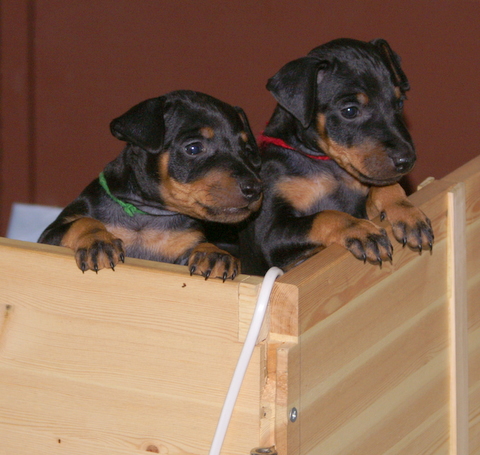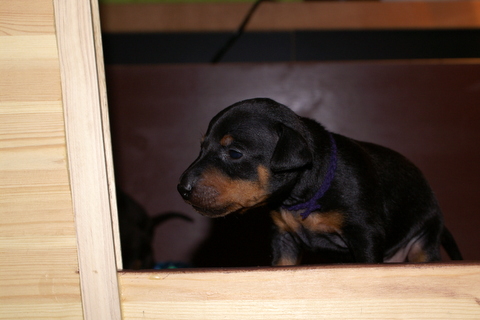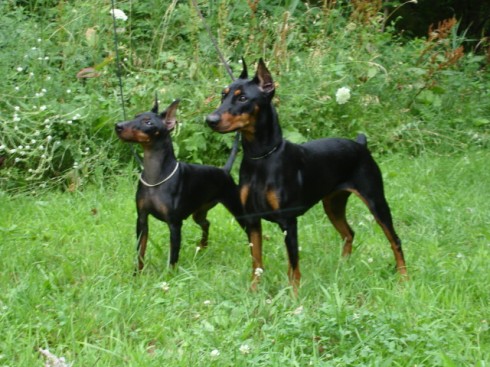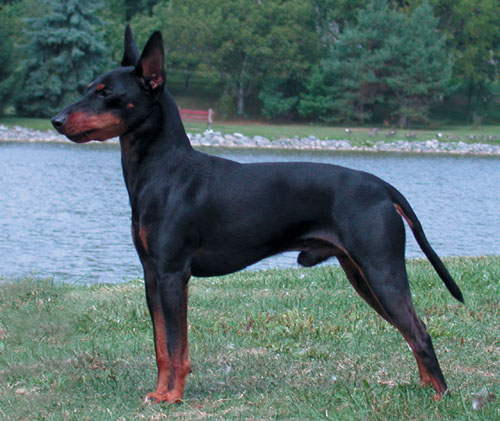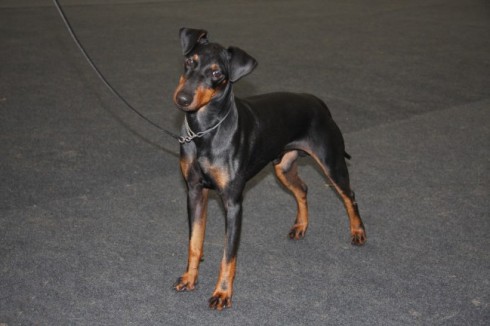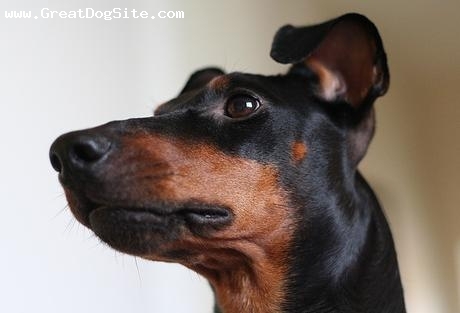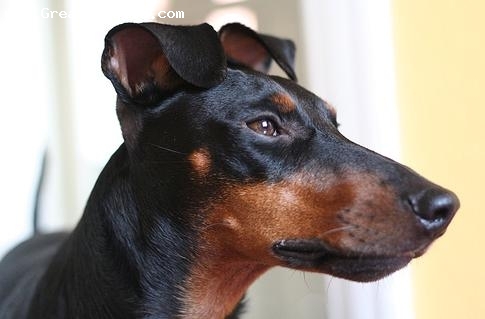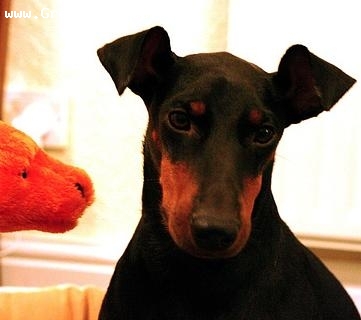Main Index
In Store
Our Web Store
Miniature Schnauzer Picture Gallery
Latest Dog Blogs
- What Are The Basic Commands To Train A Dog?
- PaySafe As The Most Popular Type Of Deposit
- Everything You Need To Know About Pet Sales
- Dogs Contribute To Our Physical And Mental Well Being
- How To Choose Where To Bet On Greyhounds In 2022
- Volunteer With Animals - How To Help Dogs Around The World
- Basic Understanding Of The House Edge
- Why You Should Get A Dog
- Top 20 Popular Dog Names Around The World
- Constipation in Dogs and How to Find Solutions
Manchester Terrier
Manchester Terrier Picture Gallery
Manchester Terrier Clubs/Associations
The Full Manchester Terrier Description
The sleek, tidy Manchester Terrier is the picture of elegance in a small dog. This dog has a quick, protective nature. He's happiest with gentle kids, and can be shy with new people. But he's very much a part of his own family; he attaches himself deeply to them.
Did you know?
The Manchester Terrier was known long ago as "the gentlemen's terrier".
The Manchester was bred in England in the district of Manchester to kill vermin and course small game.
So you want to own an Manchester Terrier?
The Manchester Terrier is a devoted affectionate dog who makes a good house pet and watch dog.
Indicative Breed Standard
General Appearance
Compact, elegant and sound with substance.
Characteristics
Keen, alert, gay and sporting.
Temperament
Discerning and devoted.
Head and Skull
Long skull, flat and narrow, level and wedge-shaped, without showing cheek muscles, well filled up under eyes, with tapering tight-lipped mouth.
Eyes
Small, dark and sparkling. Almond-shaped, not prominent.
Ears
Small and V-shaped, carried well above top line of head and hanging close to head above eyes.
Mouth
Jaws level, with perfect, regular scissor bite, i.e. upper teeth closely overlapping lower teeth and set square to the jaws.
Neck
Fairly long and tapering from shoulder to head and slightly arched at crest; free from throatiness.
Forequarters
Shoulders clean and well sloped. Front narrow and deep. Forelegs quite straight, set on well under dog; and proportionate length to body.
Body
Short with well sprung ribs, slightly arched over the loin and cut up behind ribs.
Hindquarters
Strong and muscular, well bent at stifle. Hindlegs neither cow-hocked nor with feet turned in.
Feet
Small, semi-harefooted and strong with well arched toes.
Tail
Short and set on where arch of back ends, thick where it joins body, tapering to a point, carried not higher than level of back.
Gait/Movement
Straight, free and balanced with good-reaching forequarters and driving power in hindquarters.
Coat
Close, smooth, short and glossy, of firm texture.
Colour
Jet black and rich mahogany tan distributed as follows: on head, muzzle tanned to nose, nose and nasal bone jet black. Small tan spot on each cheek and above each eye, under-jaw and throat tanned with distinct tan V. Legs from knee downward tanned with exception of toes which shall be pencilled with black, a distinct black mark (thumbmark) immediately above feet. Inside hindlegs tanned but divided with black at stifle joint. Under tail tanned, vent tanned by marking as narrow as possible so that it is covered by tail. A slight tan mark on each side of chest. Tan outside hindlegs, commonly called breeching, is undesirable. In all cases black should not run into tan or vice versa, but division between colours clearly defined.
Size
Ideal height at shoulders: dogs: 41cms (16 ins); bitches: 38 cms (15 ins).
About Our Article Directory
- Article
- 27 November 2010
- 2 comments
Canis lupus familiaris
- Breed Article
- 29 May 2010
- No comments
Quick Search
Donate
Latest Dog Pods
- Tips on How to Stop Your Dog from Biting
- Beware - Not All Advertised Dog Rescues Really Are! How Can You Know The Truth?
- Helpful Tips For Dog Obedience Problems
- How to Keep Dogs From Eating Poop
- Dog Grooming Tips - A General Overview of the Very Basics of Dog Grooming
- Recognising Different Types of Dog Obedience Problems
- 5 Important Tips On Feeding A Puppy


